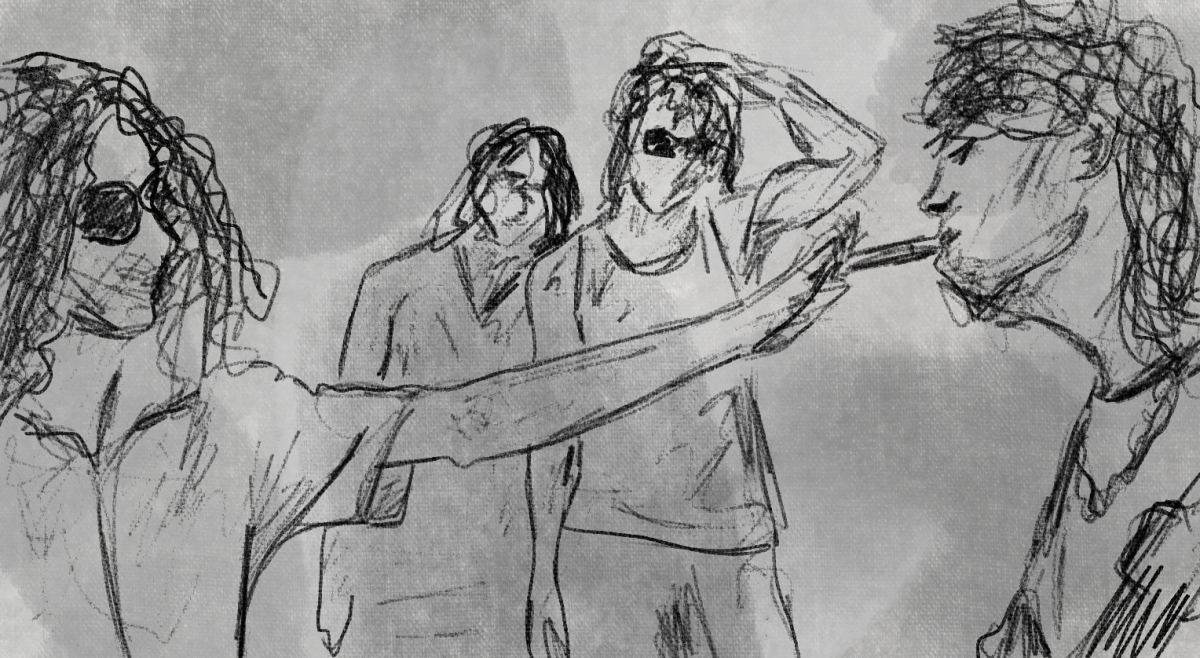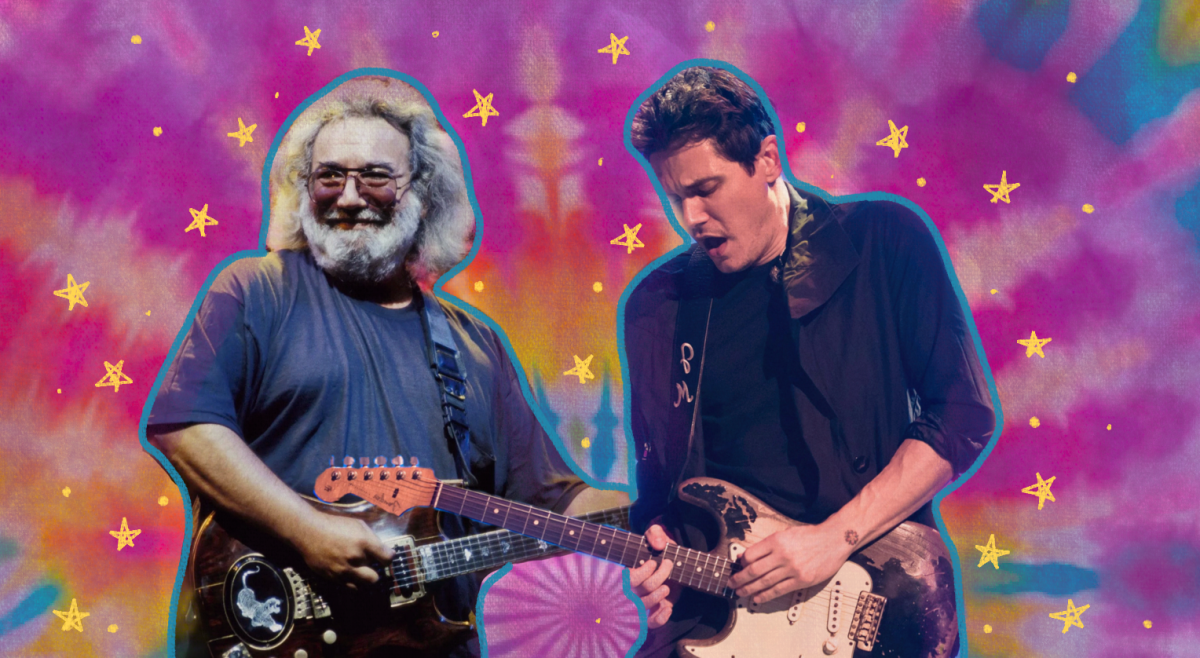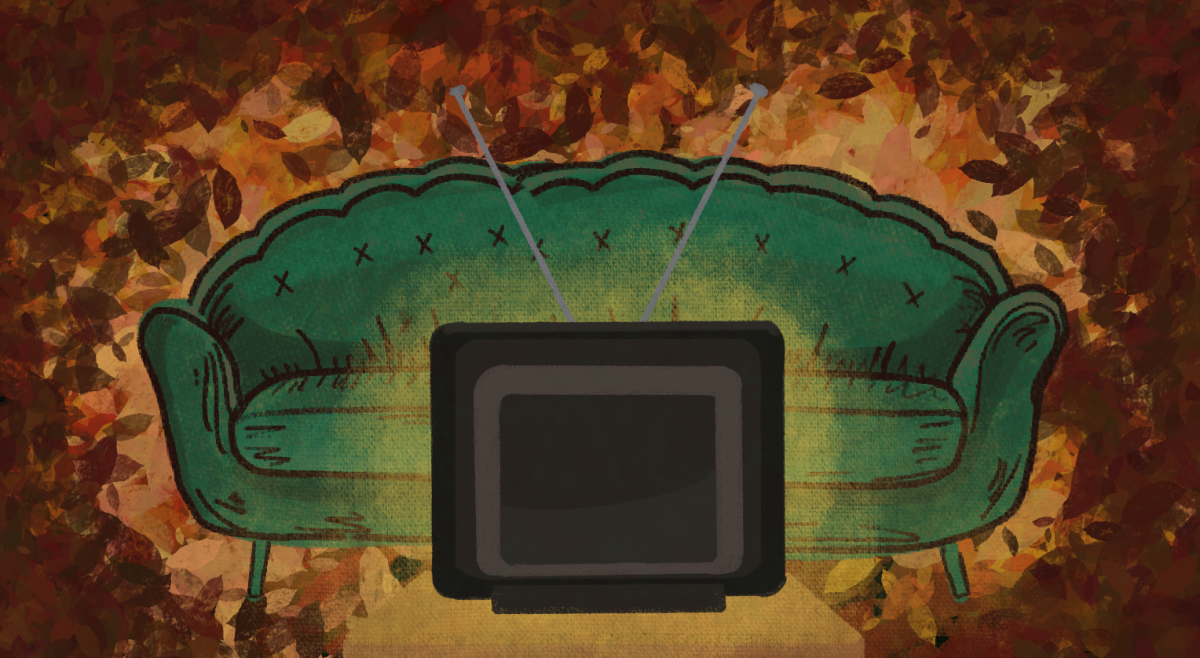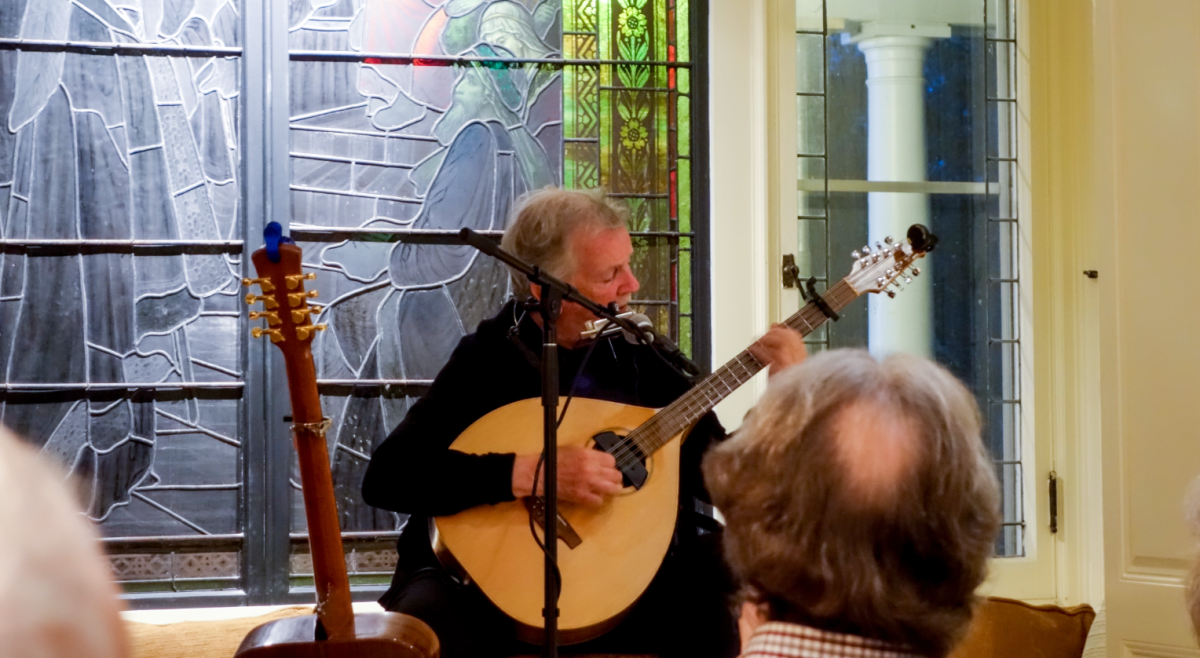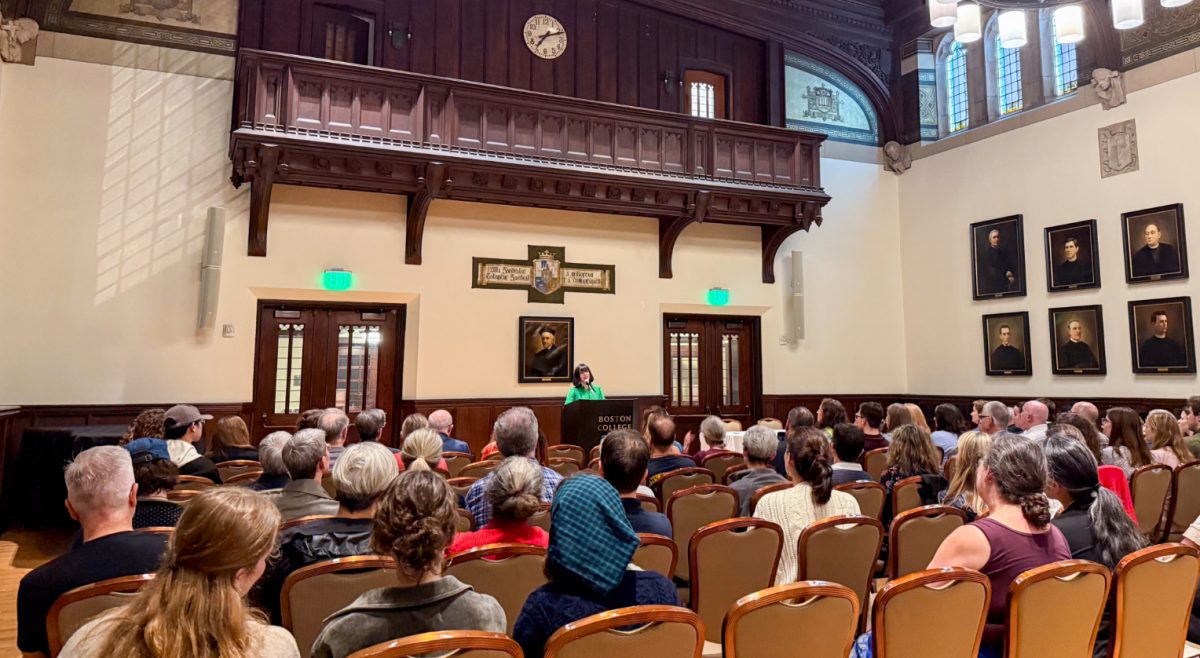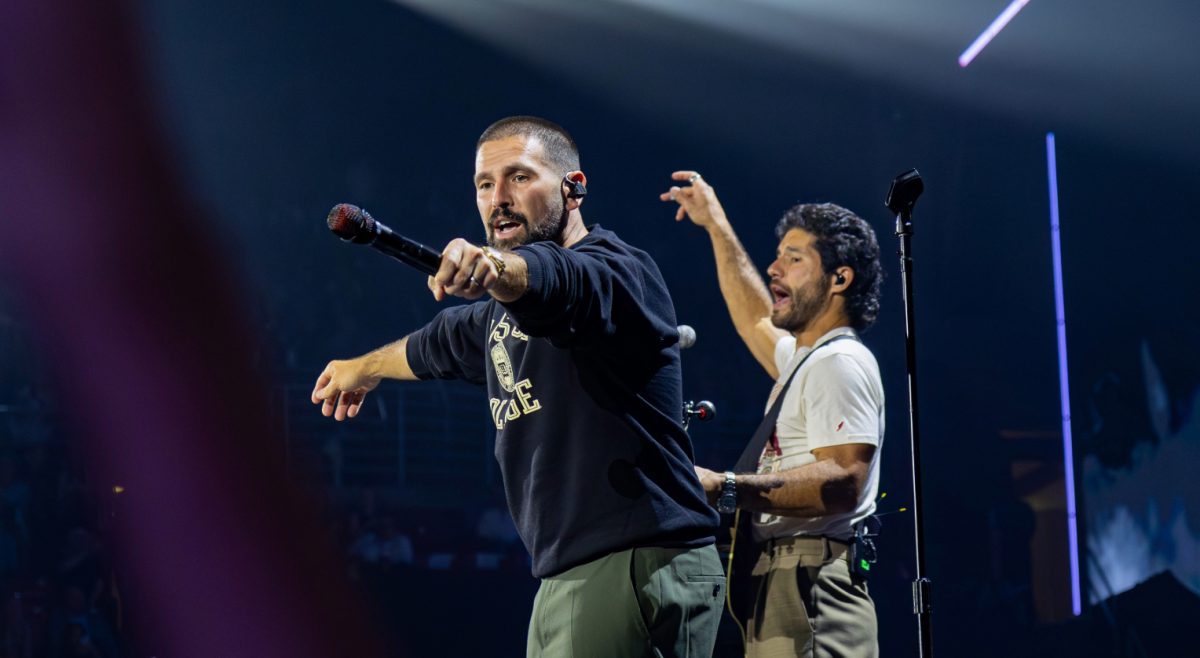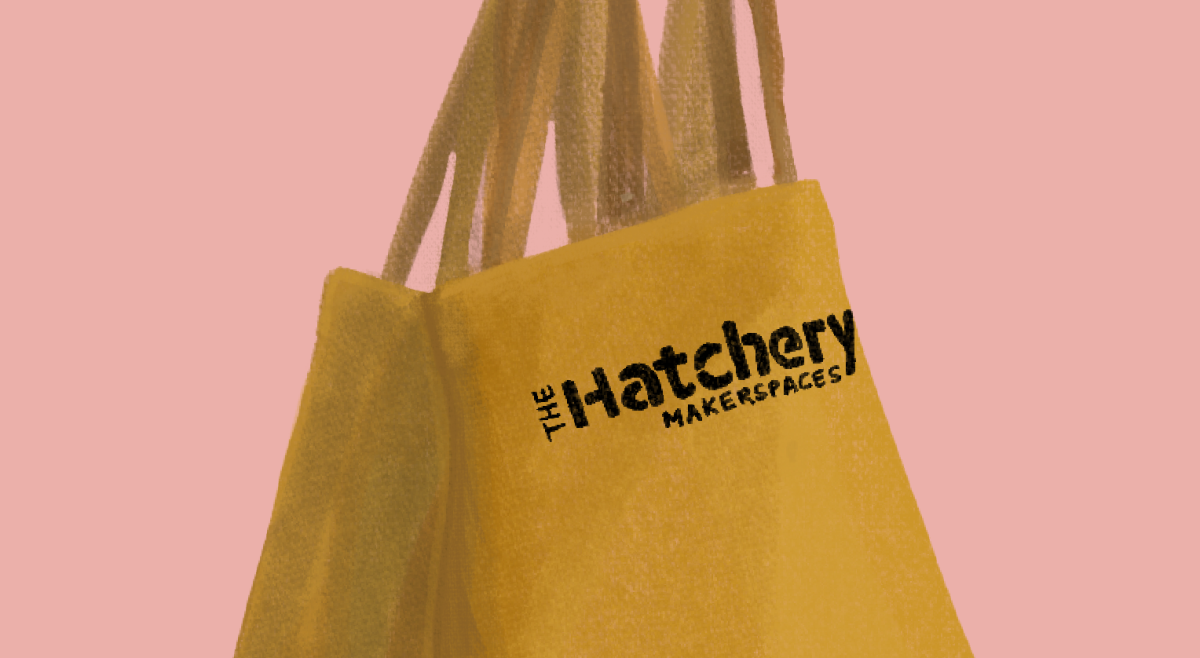Intense music plays as the lights fade into darkness. A loud clap of thunder startles the audience, and a flash of lightning pierces through the darkness to reveal Thomas (Dustin Uher, LSOE ’19), one of two characters in The Boston College Dramatics Society’s production of Venus in Fur, directed by Michael Quinn, MCAS ’19.
On Thursday and Saturday of last week, audiences filled the seats of the Bonn Studio Theater to see the production. Even at the matinee show, which tend to yield fewer audience members than standard performance times, the majority of the seats were filled. Though audience members chatted excitedly about their expectations for the show, nobody was prepared for the raunchiness, humor, or thrill that would fill the next hour and a half.
Venus in Fur follows Thomas, a playwright adapting a famous novel that inspired the term “masochism” into a play. After a day of disappointing auditions, he faces his struggle to find a leading lady for the play. There is nobody sexy enough, alive enough, young enough, until Vanda (Debbie Aboaba, MCAS ’21) bursts through his door. Energetic, electric, and eager, Vanda is desperate to prove to Thomas that she is the girl for the part. Thomas is skeptical, but after Vanda persists long enough with force, he agrees to let her audition. Thomas and Vanda begin reading from the play, slowly falling into the world of the show more deeply than they had expected. As the line between the world of the play and reality are blurred, dynamics shift and power is transferred.
The small space of the theater reflected the intimacy that is prominent in the show. Audience members sitting in the front rows could be within a foot of the actors at times. It was as if the audience were flies on the wall, seated on three sides of the acting space, where the walls of the room would be. The scenery was simple, consisting of a desk, a chaise lounge, a table with a coffeemaker, and a wall with just one door. The dim lighting added to the coyness and drama of the show. The sound cues were executed with perfect timing: the phone ringing at just the right moment, and each loud clap of thunder appropriately increased the level of drama.
Audiences immediately got a taste for what the show is going to be like when Vanda takes off her coat to reveal a risque outfit of head-to-toe leather and high heels. The audience laughs at this, and laughs even harder after Thomas’ comical reaction. Vanda’s dropping of the F-bomb in every other sentence and her ability to unapologetically speak her mind keeps the audience laughing for the majority of the show. Yet the humor and crass language does nothing to dilute the drama and high emotions that lie at the heart of the show. In moments of intensity, the audience respected the powerful silence, their eyes glued to the characters.
The dynamic between the two characters proved to be one of the strongest elements of the show. The audience was captivated by the witty banter of Vanda with her crude humor and Thomas with his sarcasm. Lines were fast paced, leaving no spare moment for the minds of audience members to wander. Each movement onstage served as a reaction to what the other actor had done or said, and these reactions are what built the connection between the two characters, a connection that was so enthralling to watch develop.
Perhaps the most impressive aspect of the show was the two actors’ total commitment. Every inch of the actors were completely in character, even when portraying their character acting as another character in the play within a play. The actors also do not shy away from anything. Things like discussing R-rated topics or being tied to a pole wearing a leather choker necklace would make anyone cringe, yet the actors executed everything fearlessly.
As soon as the lights came up at the end of the show and the cheering applause died down, it was clear that the audience had been affected. Audience members glanced to one another with looks that said, “Wow, what did I just witness?” It wasn’t just the risque material and convincing acting that was so outstanding, but also the relevance of the show’s message. The show tackled themes of sexism and the importance of how influential art can be. As Quinn wrote in his director’s note, “[the show] asks that we think more,” which is exactly what it made the audience do.
Featured Image Courtesy of Robsham Theatre


